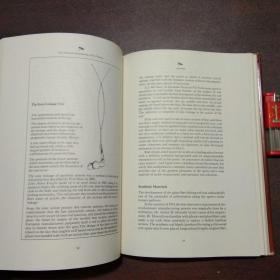In the serene and often overlooked riverside environments, the art of catching river shrimp can be both a relaxing pastime and a rewarding experience. River shrimp, known for their delectable taste and abundance, are a favorite among anglers. Whether you're a seasoned fisherman or a beginner looking to explore the world of river shrimp fishing, here are some essential techniques to help you master the craft.
Understanding River Shrimp Behavior
Before delving into the fishing techniques, it's crucial to understand the behavior of river shrimp. These creatures are generally active during the cooler parts of the day, such as early morning and late evening. They tend to stay close to the riverbed and are attracted to areas with plenty of vegetation and currents. Knowing this, you can strategically position yourself and your equipment to increase your chances of success.
Choosing the Right Equipment
The equipment you choose can significantly impact your fishing experience. Here are some essential items to consider:
Rod and Reel: A lightweight spinning rod with a medium-action is ideal for river shrimp fishing. The reel should be equipped with a smooth drag system to handle the light line and prevent breakage.
Line: Use a monofilament line with a thickness of 4 to 6 pounds. This thin line is less visible to the shrimp and easier to cast.
Hooks: Small, sharp hooks, typically in the size range of 1/0 to 2/0, are perfect for river shrimp. The smaller the hook, the less likely it is to scare away the shrimp.
Leaders: Attach a 12 to 18-inch leader made of monofilament or fluorocarbon to your main line. This helps to reduce the visibility of your line to the shrimp.
Bait: Natural baits like small pieces of shrimp, worms, or artificial lures designed for shrimp can be effective. Live bait is often the most attractive to the shrimp.
Casting Techniques
Casting is a fundamental skill in river shrimp fishing. Here are some tips to improve your casting technique:
Practice Your Cast: Spend some time practicing your cast in an open area. Aim for accuracy and consistency.
Use a Gentle Cast: River shrimp are easily spooked, so a gentle, soft cast is essential. Avoid overcasting, as it can scare the shrimp away.
Adjust for Wind: If there's a breeze, adjust your casting angle to compensate for the wind. This will help you maintain control over your bait.
Fishing Techniques
Once you've mastered your casting, it's time to focus on the actual fishing techniques:
Locate the Shrimp: Start by scanning the riverbed for areas with dense vegetation, rocks, or other structures where shrimp are likely to be hiding.
Drop Your Bait: Cast your line gently into the area you've identified. Allow your bait to sink to the riverbed for a few seconds.
Retrieve Method: The retrieve method is crucial. A slow and steady retrieve, often referred to as a "jigging" motion, is effective. Move your rod tip in short, upward and downward motions to mimic the natural movement of shrimp.

Patience is Key: River shrimp fishing requires patience. Wait for the shrimp to take the bait before setting the hook. A sudden or violent movement can spook the shrimp.
Set the Hook: When you feel a gentle tap or pull on your line, set the hook gently but firmly. Be prepared for a light fight, as river shrimp are not known for their strength.
Safety and Etiquette
Lastly, always prioritize safety and adhere to local fishing regulations. Here are some tips:
Stay Safe: Wear appropriate clothing and footwear for the river environment. Always keep an eye on your surroundings to avoid accidents.
Respect the Environment: Take care not to harm the riverbed or any wildlife. Dispose of your trash properly and leave the area as you found it.
Follow Regulations: Be aware of local fishing laws and regulations regarding river shrimp fishing. These may include size limits, bag limits, and seasonal restrictions.
By incorporating these techniques and tips into your river shrimp fishing routine, you'll be well on your way to becoming a skilled angler. Remember, the key to success lies in understanding the shrimp's behavior, using the right equipment, and employing a patient and strategic approach. Happy fishing!












